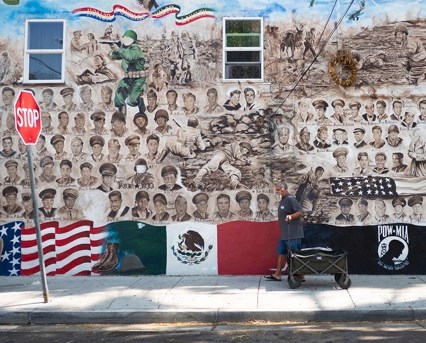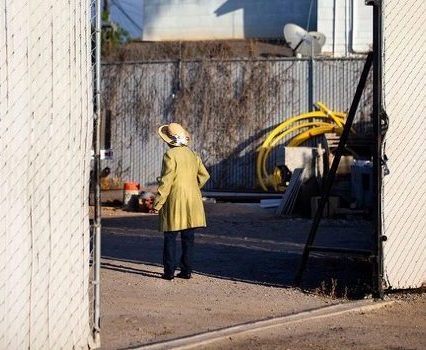


Organizations
Grist
Voice of OC
Award
Excellence in Social Justice Reporting, Portfolio
Program
2022
Entry Links
Link 1
Link 2
Link 3
Link 4
“Ghosts of Polluters Past” and its accompanying “Toxic Churn,” which published on Grist.org on January 13, 2022, together present a troubling account of the pervasiveness of toxic soil lead contamination in America’s urban centers, and the cumulative impact of industrialization and racial inequities.
In “Ghosts of Polluters Past,” Grist senior staff writer Yvette Cabrera paints a poignant portrait of the Mexican American Logan barrio in the city of Santa Ana and its nearly century-long struggle to fight industrial pollution that made it difficult for residents to live and breathe.
Through historical documents, Cabrera reveals how the legacy of discriminatory policies such as housing segregation via racially restrictive deeds, as well as zoning decisions, systematically barred people of color from healthier neighborhoods in Santa Ana while exposing areas such as the Logan barrio to freeway emissions and polluting industries. The perils of allowing this mixed-use zoning in dense, predominantly low-income Latino neighborhoods are reflected in the original soil lead contamination data collected by Cabrera, who over a span of five years conducted more than 1,600 soil tests for the presence of lead, and found the greatest concentration of hazardous lead soil contamination in neighborhoods like Logan.
In “Toxic Churn,” Cabrera and her colleague Clayton Aldern, Grist’s senior data reporter, outline how the toxic legacy of soil lead in urban neighborhoods across the U.S. has largely escaped regulatory scrutiny. Decades of lead use in everything from car batteries to paint to gasoline has allowed this invisible neurotoxicant to pervade every aspect of our urban lives and environment. Yet even the most rigorous governmental data, the Environmental Protection Agency’s Toxic Release Inventory, a federal database that catalogs 35 years of site-specific pollution, doesn’t indicate the hazards reflected in soil lead contamination mapped by Grist.
Using California manufacturing directories documenting industrial businesses since the mid-20th century, Grist created a database that catalogs the accumulation of defunct industrial sites that evaded the oversight of the EPA, often due to their age. Grist found that a much larger group of industrial businesses dotted Santa Ana’s urban landscape, nearly 2,000 such sites since the 1960s, with more than 300 active sites as of 2014, the most recent directory Grist analyzed.
While focusing on the enduring struggle against racial discrimination, economic inequities, and the environmental injustices of one neighborhood, the stories also illustrate a much larger national crisis: How the accumulation of lead contamination and industrial pollution in many urban centers across the country have left low-income neighborhoods and communities of color carrying the heaviest burden of toxic lead contaminants. As the nation works to address the systemic failures that have led to racial inequities, these stories piece together a richly detailed account showing how discriminatory policies and practices are not a relic of the past, and in fact leave a toxic imprint in the soil, preventing residents from breathing healthy air and living in a safe environment.
The Online Journalism Awards™ (OJAs), launched in May 2000, are the only comprehensive set of journalism prizes honoring excellence in digital journalism around the world.
